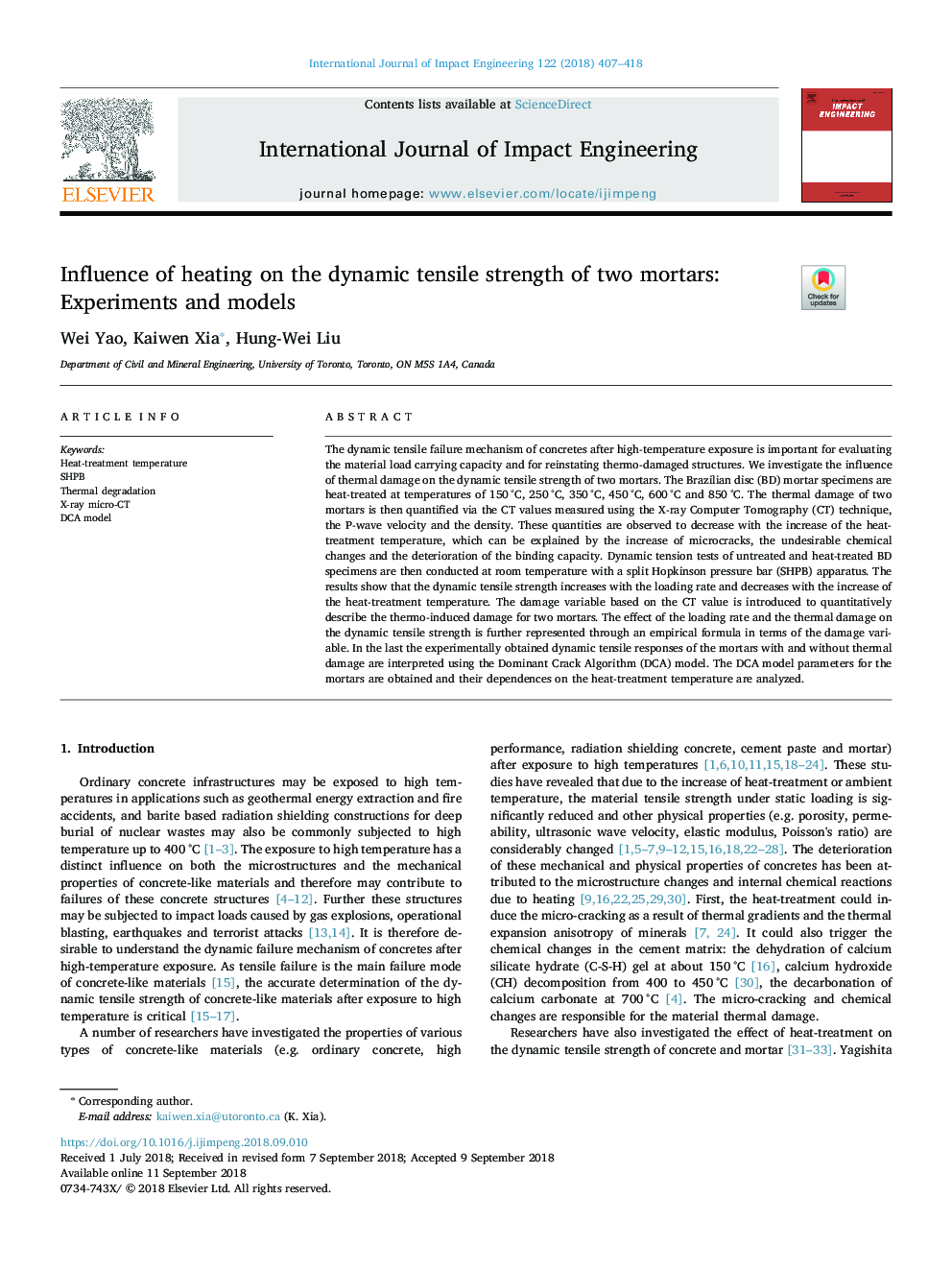| Article ID | Journal | Published Year | Pages | File Type |
|---|---|---|---|---|
| 10133819 | International Journal of Impact Engineering | 2018 | 12 Pages |
Abstract
The dynamic tensile failure mechanism of concretes after high-temperature exposure is important for evaluating the material load carrying capacity and for reinstating thermo-damaged structures. We investigate the influence of thermal damage on the dynamic tensile strength of two mortars. The Brazilian disc (BD) mortar specimens are heat-treated at temperatures of 150°C, 250°C, 350°C, 450°C, 600°C and 850°C. The thermal damage of two mortars is then quantified via the CT values measured using the X-ray Computer Tomography (CT) technique, the P-wave velocity and the density. These quantities are observed to decrease with the increase of the heat-treatment temperature, which can be explained by the increase of microcracks, the undesirable chemical changes and the deterioration of the binding capacity. Dynamic tension tests of untreated and heat-treated BD specimens are then conducted at room temperature with a split Hopkinson pressure bar (SHPB) apparatus. The results show that the dynamic tensile strength increases with the loading rate and decreases with the increase of the heat-treatment temperature. The damage variable based on the CT value is introduced to quantitatively describe the thermo-induced damage for two mortars. The effect of the loading rate and the thermal damage on the dynamic tensile strength is further represented through an empirical formula in terms of the damage variable. In the last the experimentally obtained dynamic tensile responses of the mortars with and without thermal damage are interpreted using the Dominant Crack Algorithm (DCA) model. The DCA model parameters for the mortars are obtained and their dependences on the heat-treatment temperature are analyzed.
Related Topics
Physical Sciences and Engineering
Engineering
Mechanical Engineering
Authors
Wei Yao, Kaiwen Xia, Hung-Wei Liu,
